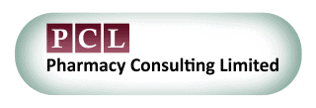Industry structure
Pharmacies and drug stores in the states are engaged in the retailing business of four core product categories: prescriptions, over-the-counter (OTC) medications, toiletries and cosmetics, with the most important two segments being prescriptions and OTC medications, which account for about 74.0% of product sales within this industry. They may also carry a number of related services and products, such as basic health and photo processing services, consumables, stationery, housewares and tobacco (with one exception that CVS Caremark decided to kick the habit by sacrificing its $2 billion annual sale of tobacco starting from October 1, 2014).
Development
The drug store industry started in the mid-1800s, when Americans began to use “patent remedies” to treat illnesses. Following the
great depression, the drug stores grew rapidly due to the massively increased production of marketed medicines under a manufacturer’s brand name. During 1990s, an aging population, together with a healthier attitude among consumers and a trend toward self-medication accelerated the development of this industry. By the late 1990s, a total of 39,754 traditional drug stores existed in the United States with a sales volume up to $106.7 billion, among which, prescription sales and OTCs had total sales of $103 billion and occupied more than 60 percent of all sales in a traditional chain store. Attracted to the rapid growth of this industry, other big players including supermarkets, mass merchandisers, and warehouse clubs entered the market and strengthened the competition, which led to a shakeup among traditional chains and independent
stores.
An advantage of these entities over drug stores is the significant high level (eight times more) of consumer exposure. In addition, mass merchandisers such as Wal-Mart, started to open their own in store pharmacies. By the early 2000s, it has more than 3000 pharmacies national wide. To retaliate, traditional drug stores added food items and other staples to attract the so called “quick-trip” shoppers. These consumers are represented by time-pressed women who typically go shopping for smaller households and may not need to frequently fill stock at the supermarket. Wild growth of competition precipitated the differentiation of traditional drug stores from their competitors and strengthened their image as health care providers. As a result, five main store formats emerged within the pharmacies and drug store industry:
chain stores, independents, mass merchandisers, supermarkets, and mail orders.
Current industry conditions
While recession years of 2008-09 trounced the economy in the states, the pharmacies and drug stores industry did not experience the steep losses and even achieved slight growth. It is in its mature stage with more than 62,000 drug stores existed national wide and has revenue of $257 billion by 2013. Continued growth of this industry is expected at an annualized rate of 2.6% to $291.4 billion by 2019. In addition, the drug store gross margin has maintained at a steady rate of about 25.4% of sales, while independent pharmacies had a slightly lower margin of about 22.6%. As consumers became more interested in customized and personalized care in recent years, pharmacies have started to expand into home delivery, therapy management, and prevention care services within the stores. An example would be the ubiquitous retail clinics where trained professionals such as nurse practitioners provide immunization services, health screenings, as well as monitoring patients’ chronic conditions, which has bolstered industry revenue. Furthermore, a host of beneficial factors are likely to prop up the growth of this industry in the near future:
Aging Population
The number of individuals age 65 and over is expected to exceed 49 million by 2017 and is the most rapidly growing segment of the population. This age group suffers from more chronic illnesses and disabilities than the rest of the population and accounts for a substantial portion of total healthcare expenditures in the United States. According to data from the Centers for Disease Control and Prevention, about 89.7% of
individuals aged 65 and older used a prescription drug. Consequently, the industry benefits from strong need-based demand for prescription drugs from this age demographic.
Per capita disposable income
The level of household income reflects consumers’ purchasing power. Although need-based demand for prescription drugs is typically less susceptible to changes in consumers’ discretionary income, sales of non-essential, front-end goods is subject to fluctuations in demand. Thus, the expected slow increase of per capita disposable income start from 2014 suggests a potential opportunity for the industry.
Generic wave
Typically, new generic drugs are highly profitable for the industry due to their eye-watering profit margins caused by pharmacies’ purchasing power in the procurement process. Generic drugs are assuming a greater position in the overall pharmaceutical pie with each passing year as driven by consumer acceptance and pharmacy benefit manager (PBM) strategies to lower the healthcare cost by increasing generic drug utilization. Reports showed that generic drugs account for 83% of total U.S. prescriptions in 2013. In addition, the patent cliff (a prediction of about 35 billion in branded pharmaceutical revenue is at risk to generic during 2014-17), which causes many blockbuster drugs to lose their patent exclusivity, is likely to stimulate the growth of industry revenue.
Healthcare reform
Medicare and Medicaid programs assist seniors and lower-income consumers with affording their prescription drugs. Obamacare is expected to increase federal funding for Medicare and Medicaid, which allows Medicare patients in the coverage gap to get some of their prescription costs subsidized, thus boosting demand for prescription drugs from pharmacies. Furthermore, as more individuals gain health insurance thanks to Obamacare again, the number of physician visits will
rise. As a result, the demand for prescriptions is expected to gain momentum,
which will ultimately benefit the industry.
Several considerations for pharmacies
based on previous discussion
- Generic opportunities are abundant (in the near term for orals)
- Stay alert on patent settlements
- Take advantage of immunization (flu) opportunities as they present themselves
